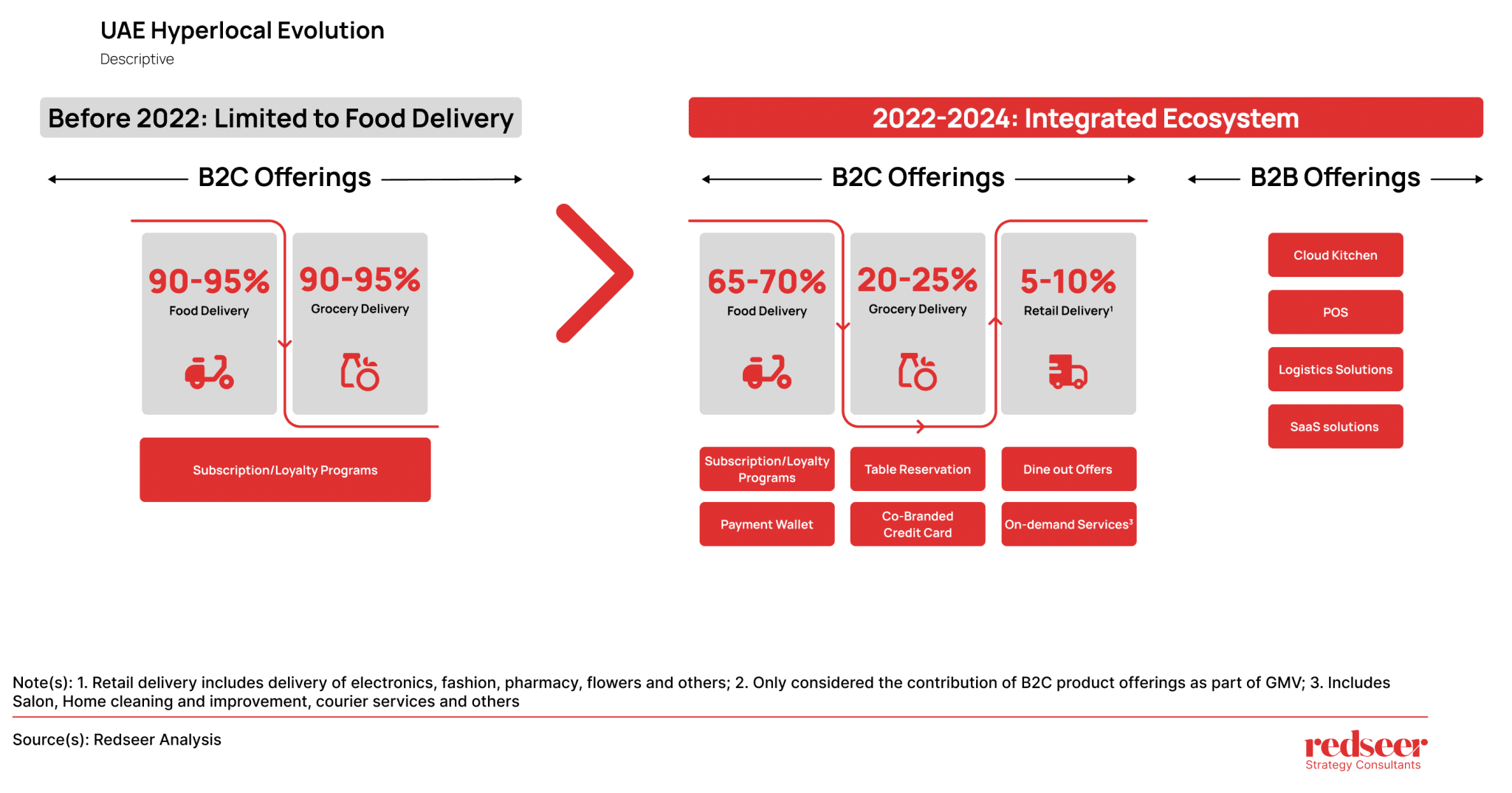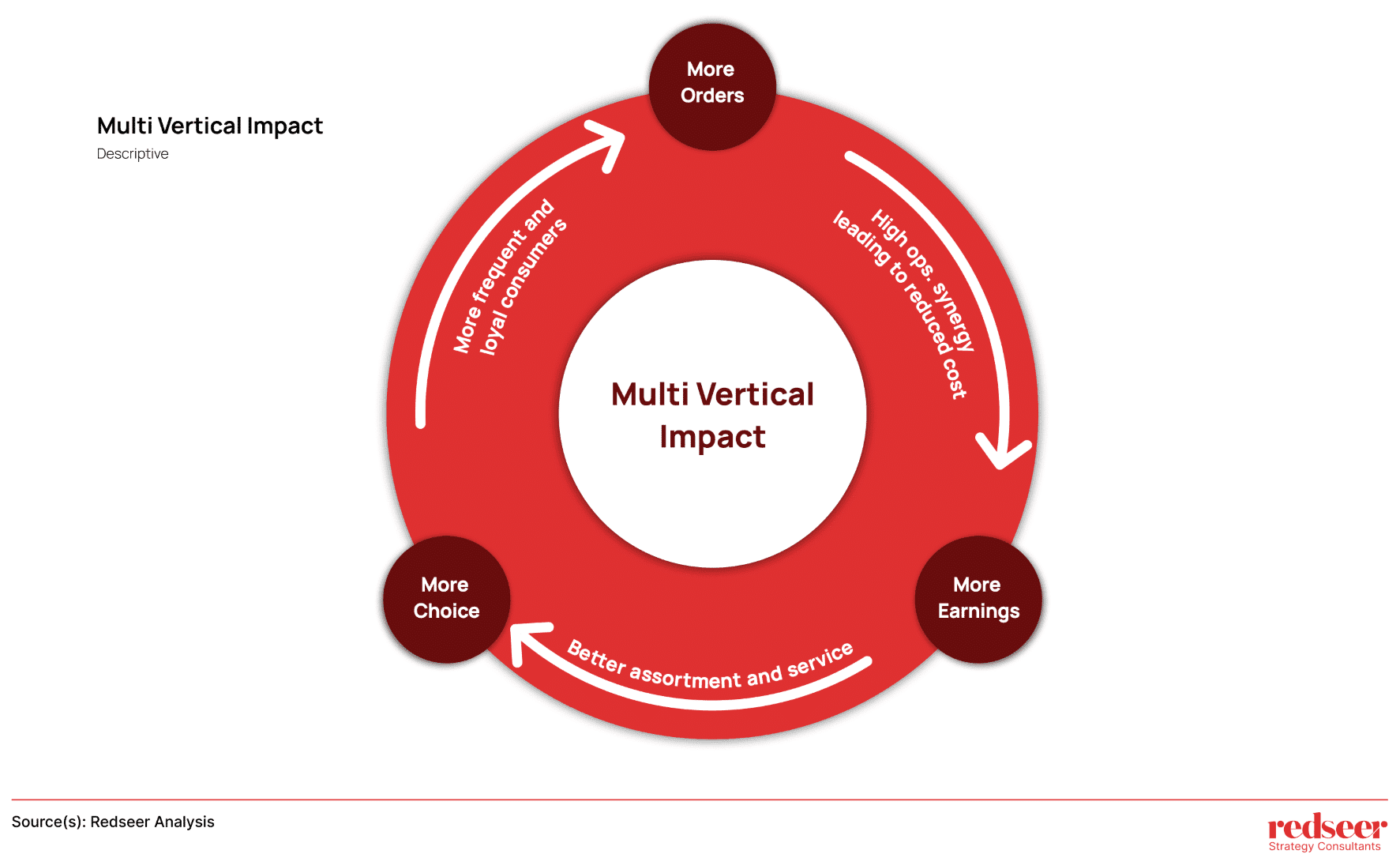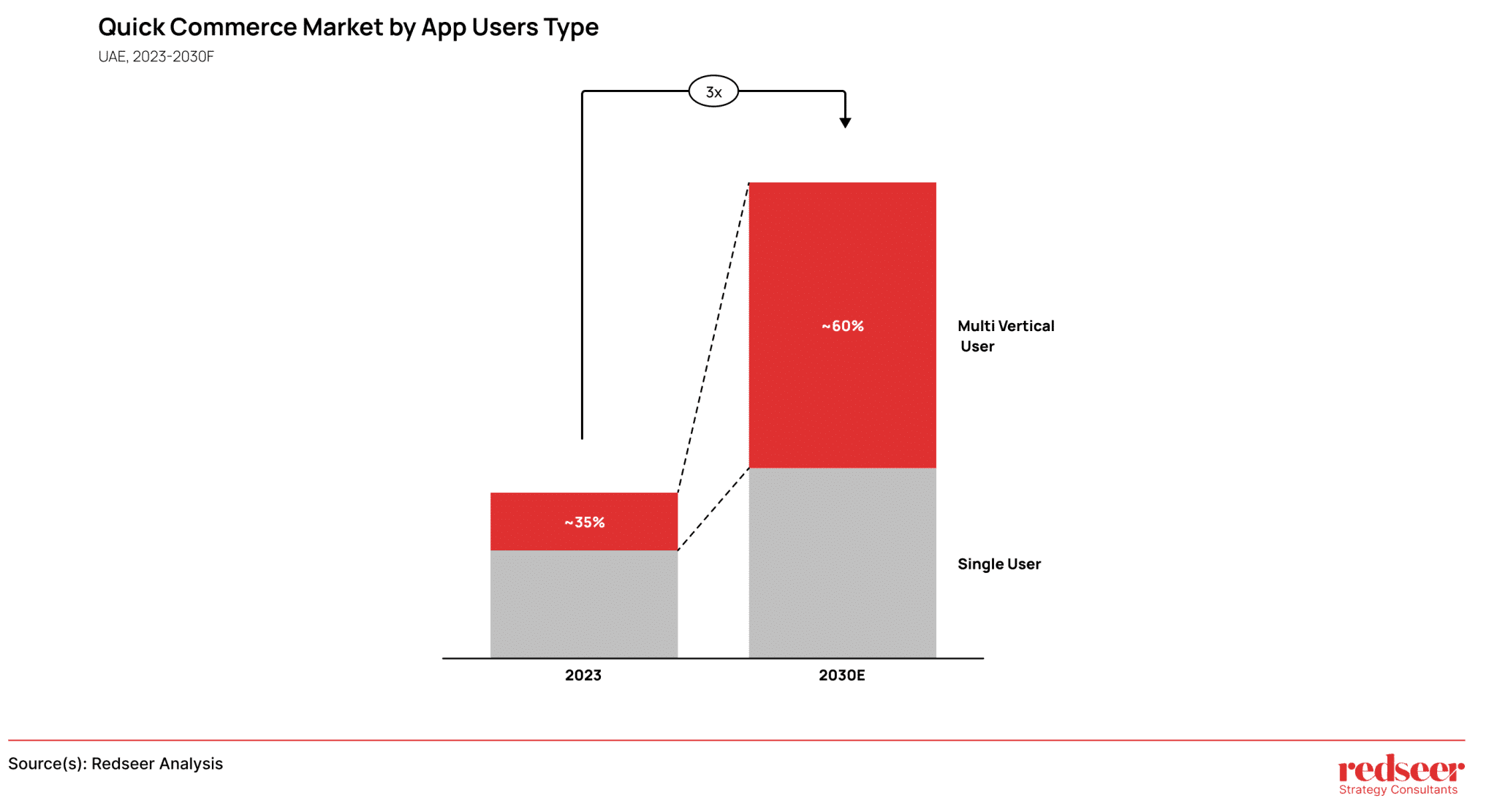
Multi-Verticality shaping the future of Q-commerce
The Q-commerce (quick commerce) landscape in the UAE is undergoing rapid transformation. What started as a niche food delivery service has evolved into a diverse, multi-vertical ecosystem catering to various consumer needs. With increasing expectations for speed and convenience, platforms are expanding their offerings beyond food delivery, shaping the future of on-demand services.
Want to evaluate new investment and M&A opportunities?
This article explores the evolution of Q-commerce in the UAE and how multi-verticality is unlocking significant growth for consumers, vendors, and the overall market.
Read on for a detailed overview of key market movements in the Q-commerce landscape
1. Q-commerce has rapidly expanded beyond food delivery…

Historically, the quick commerce (Q-commerce) market in GCC was primarily focused on food delivery, contributing to over 90% of the segment’s GMV, while grocery delivery remained marginal at less than 5%. However, in the past few years, this landscape has transformed significantly, with a wider range of B2C offerings emerging. This includes substantial growth in grocery delivery, as well as retail products like electronics, fashion, and pharmacy items, alongside on-demand services.
Platforms such as Talabat, Careem, and Noon, now deliver everything from groceries and pharmacy items to electronics and flowers. This diversification reflects a shift towards becoming all-encompassing ‘super apps,’ aiming to cover every aspect of daily life, including food, groceries, retail, and financial transactions
2. …driven by the rising demand for multi-vertical services from both consumers and partners

As the Q-commerce landscape in the UAE evolves, the demand for multi-vertical solutions is rising, driven by diverse needs from consumers, vendors, and riders. Over 85% of consumers prefer platforms that provide a comprehensive suite of services. Meanwhile, 40% of vendors, particularly in the restaurant sector, seek platforms with seamless tech integrations, such as SaaS and logistics solutions. Lastly, riders are also voicing their needs, with over 40% desiring to increase their order volume per day. Platforms that enable riders to handle a greater range of services can significantly enhance their income potential and operational efficiency.
3. This has created a robust flywheel that boosts customer retention and operational efficiency

The integration of multi-vertical solutions in the Q-commerce ecosystem has created a powerful flywheel effect. As platforms offer more choice—expanding into food, grocery, retail, and more—they attract a larger customer base, leading to more orders. This, in turn, drives higher earnings for vendors, riders, and platforms, creating a cycle that continuously feeds itself.
4. Going forward, this rise in multi-vertical usage will lead to a three-fold jump in the UAE Q-commerce market

The shift toward multi-vertical users is set to transform the Q-commerce landscape in the UAE, propelling the market to triple. As the Q-commerce market in the UAE continues to expand through multi-vertical offerings, companies are unlocking new growth opportunities and deepening customer engagement. With order frequency and market size on the rise, the future looks promising for players embracing this shift.
Stay tuned for more developments as this dynamic sector shapes the next chapter of quick commerce across MENA in 2024 and beyond.

Written by
Sandeep Ganediwalla
Partner
Sandeep is the Partner with 20+ years of experience in consulting and technology. He has expertise in multiple sectors including ecommerce, technology, telecom and private equity.
Talk to me
The Body Lotion Opportunity in Indian E-Commerce

Christmas Vs New Year’s Eve 2025: Redefined Value Creation Across India’s On-Demand Economy

2026 and Beyond: The Next Exit Cycle for MENA’s Digital Leaders
